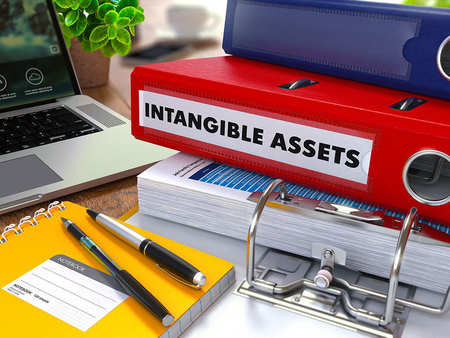
Your business’ assets are one of its greatest strengths. They support your day-to-day operations, can collateralize a loan, and could manufacture inventory. It’s important to track and account for them accurately.
Fixed assets are easy to identify - the computer sitting on the desk, the office chair, the inventory in the warehouse. They appear on the Balance Sheet and you book depreciation against them. But intangible assets can be harder for a small business to identify and track.
Often overlooked, intangible assets can be just as important as physical assets, if not moreso, for some businesses. Most business owners should have a working knowledge of intangible assets and how they impact their business.
What are Intangible Assets?
Intangible assets are assets that you can’t touch. They’re not physical in nature. Examples of intangible assets include:
- Goodwill
- Patents
- Trademarks
- Copyrights
- Licensing
- Intellectual Property
- Brand reputation
- Research and development results
Goodwill represents how others view your business. It’s your brand name’s value, customer reputation, and employee relations. Patents, trademarks, and copyrights represent the value of the inventions you’ve developed or purchased the rights to produce. If your business manufactures items with others’ logos, characters, or other licensed properties, you likely have licensing deals. Intellectual property is similar in nature, though you may not have filed for formal protection of it.
Some businesses, such as General Mills, manage multiple brands. In this case, the reputation of each brand is an intangible asset. If there was an issue with food poisoning, for example, with one brand it would tarnish its reputation.
All of these items relate to either your business’ or product reputation or the results of intellectual work performed by your employees. You invested money in creating them, whether by paying employee salaries or conducting studies, and will want to have a strong grasp of their value.
Why do Intangible Assets Matter to Your Business?
Intangible assets have value, and a reduction in their value could impact your business. The loss of a patent could increase competition, reducing what you can charge for your product. If your brand’s reputation suffers, sales could drop.
Most businesses test their goodwill on an annual basis. It’s important to note that it’s only booked on the Balance Sheet through an acquisition or merger. The amount only changes if the carrying amount exceeds its fair value and it becomes necessary to book impairment.
Unlike goodwill, intangible assets are regularly reduced through amortization. Amortization reduces their value by a fixed amount on a quarterly or annual basis. An accountant can help you determine the correct amount to amortize based upon the asset’s expected reduction in value over time.
These assets become particularly important if you are selling your business or investigating a potential merger. The acquiring company will want assurances that these assets have value, as they will be included in the purchase price.
Identifying Intangible Assets
Identifying, valuing, and perhaps impairing goodwill can be a complicated process that is best performed by an accounting professional. It involves examining hard data, such as sales, customer retention rates, to determine the fair value of a reporting unit. Soft data can be gathered through conducting customer satisfaction surveys,
To identify intangible assets relating to patents, trademarks, and copyrights, conduct an internal audit of these areas. Your legal counsel should have copies of these, and any licensing arrangements, on file.
Finding intellectual property could require a deeper dive, particularly in software or technology companies. Audit your employee agreements to ensure that your company retains the rights to anything they develop while employed with you. Look at the invention and creation capture process, as well as attribution of inventions and invention ownership agreements, to find any intellectual property that your company needs to protect.
Depending on your business, this could be an involved process or a simple one. Once identified, put a process in place to both track them and identify new intangible assets as they become relevant.
Protecting Intangible Assets
Having robust contracts surrounding the development on any IP protects you from legal issues in the future. Employees in research and development, your software and IT groups, and other risk areas should have signed contracts clarifying ownership rights to anything they develop at your company.
If you have outsourced any of your IP development, such as hiring another company to assist with software development, make sure that their contract specifies who owns the final result.
Protecting patents, trademarks, and other registered intellectual property could involve tracking expiration dates and renewing them, as possible. Making changes and improvements to existing products can also help you extend your patents. Consult an attorney for help in planning how to protect these assets.
For smaller businesses, managing your brand and company reputation could be as simple as tracking and responding to online reviews. Larger companies often invest in PR management and have an individual or team in-house dedicated to managing it.
Identifying, tracking, and protecting your intangible assets may not have been a priority when you were a start-up, but now could have a significant impact on your future operations. Taking the time to do it now will pay off in the future.
